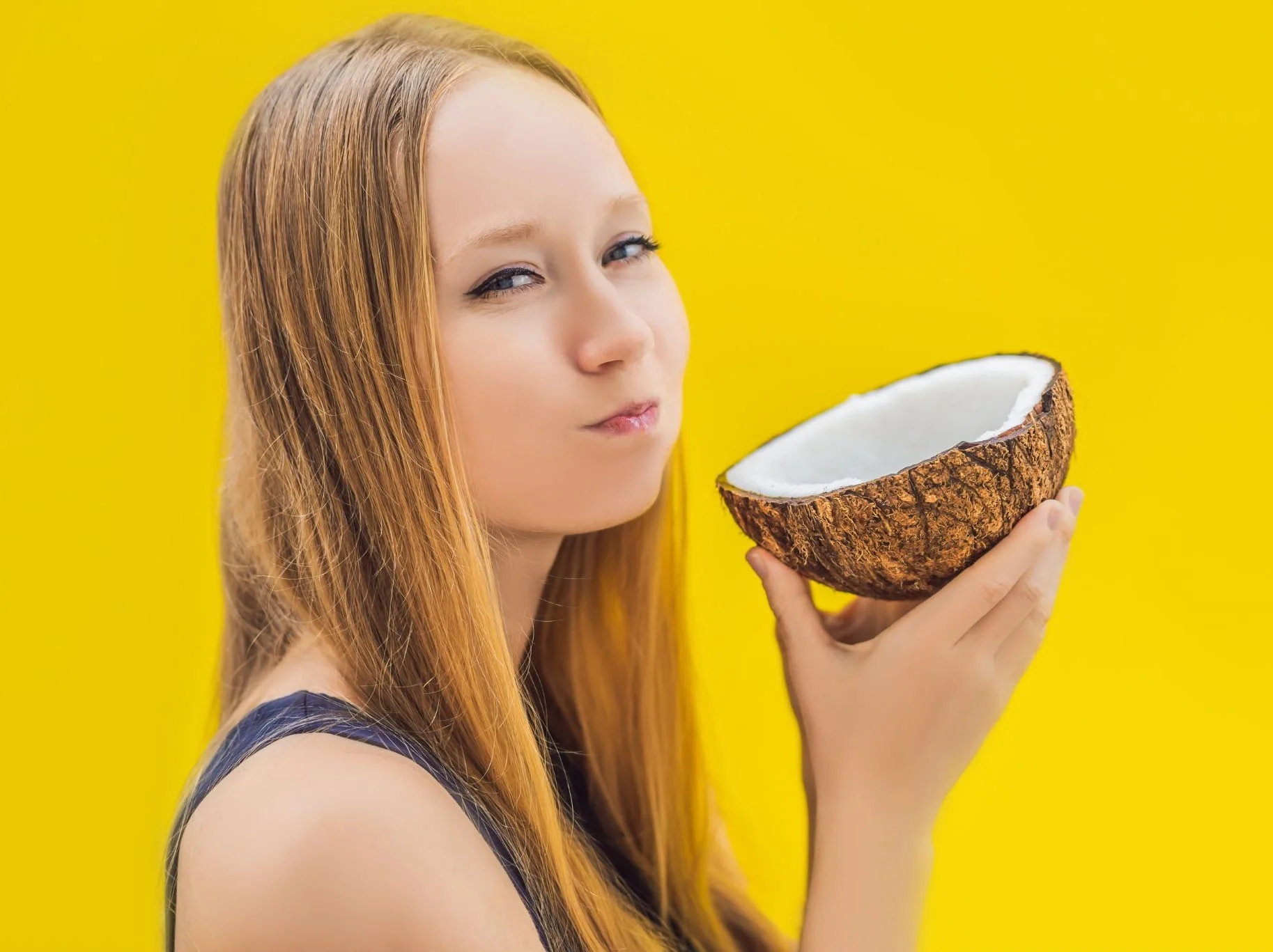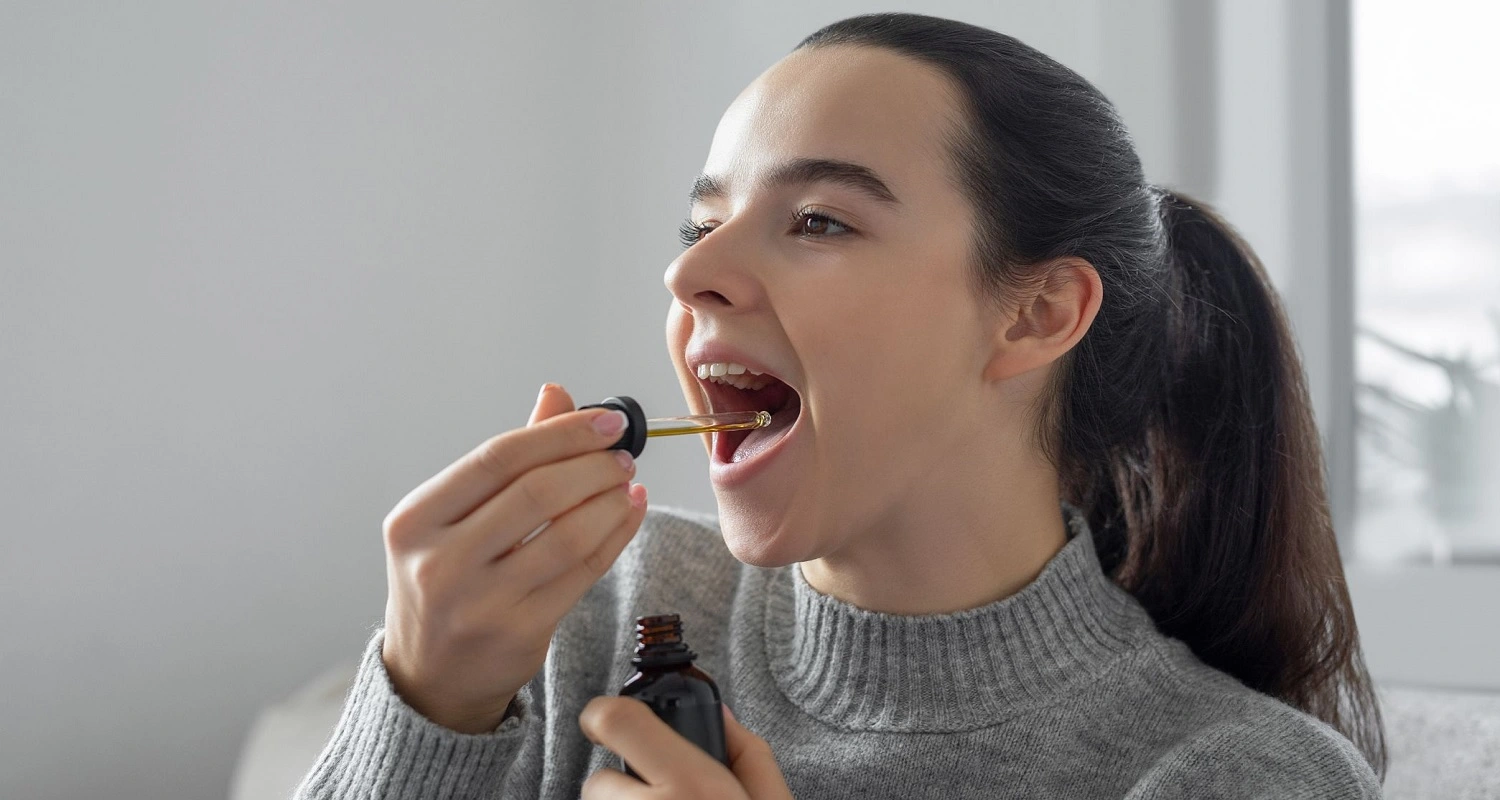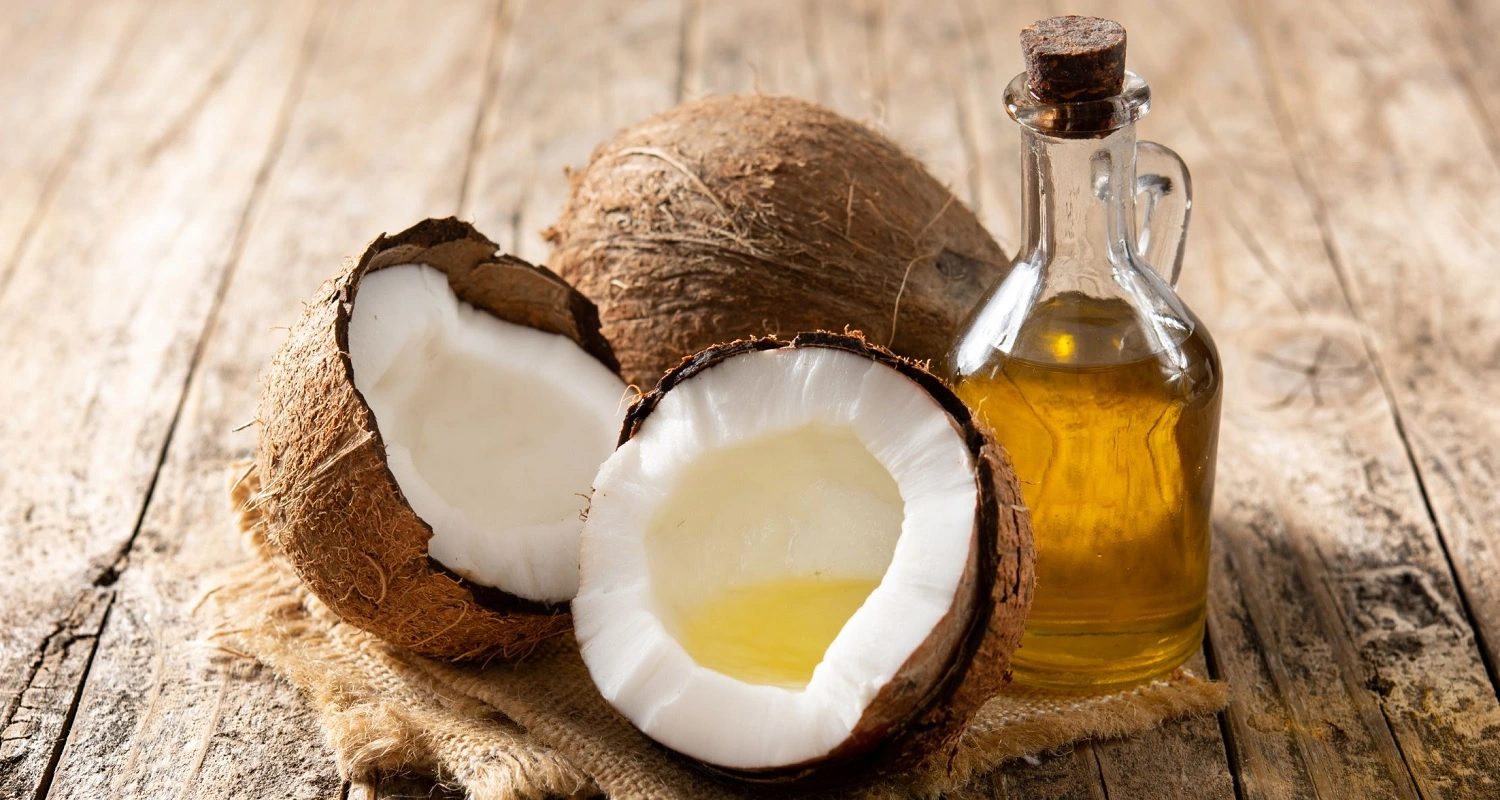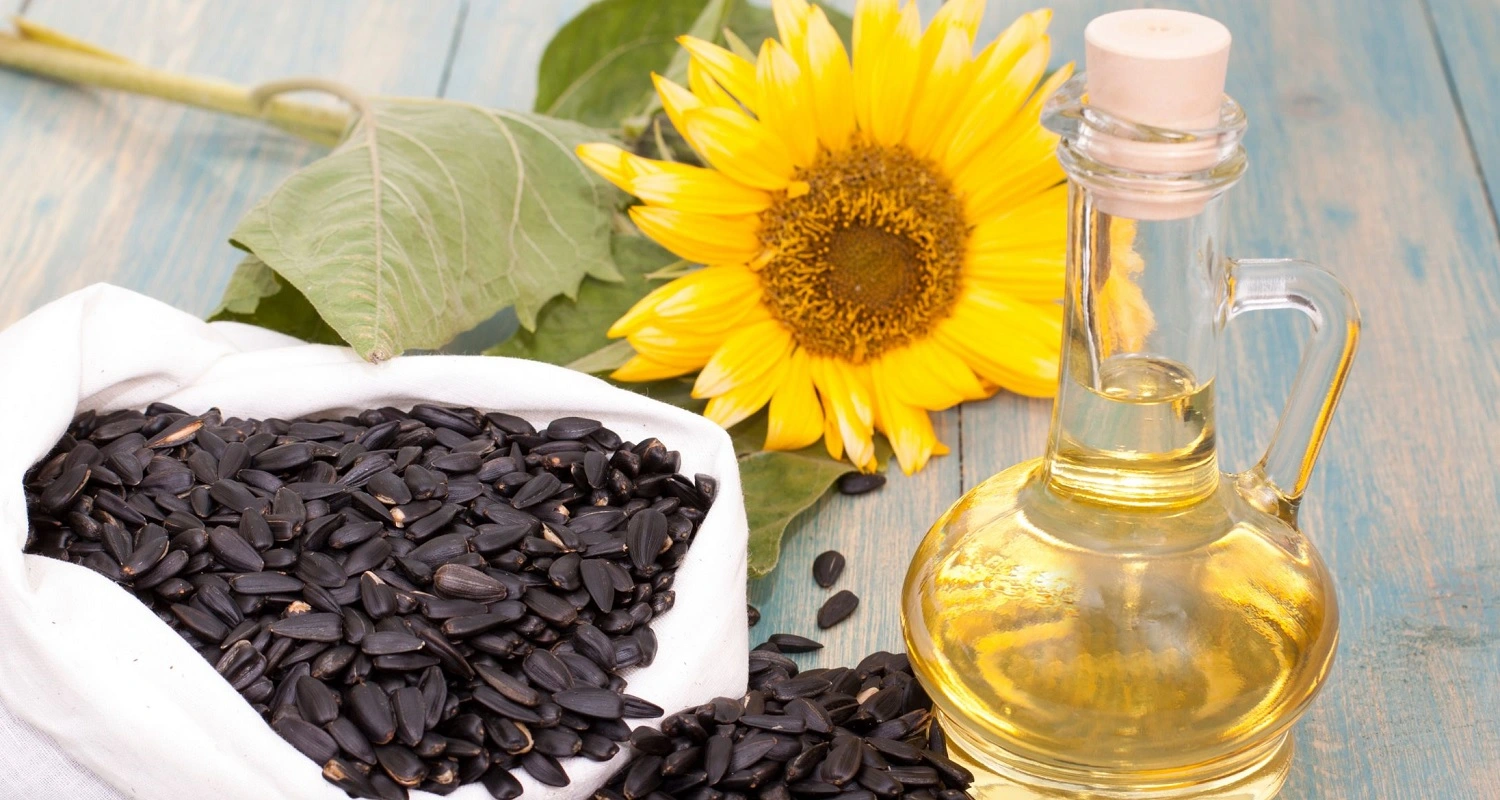Last Updated on: 13th December 2025, 05:34 am
Unlock Radiant Smiles using Oil Pulling
Have you heard of oil pulling? This ancient Ayurvedic practice is making a comeback due to its amazing oral health benefits. All you need to do is swish coconut oil in your mouth for a few minutes, and it will work wonders in pulling out toxins and bacteria from your gums, teeth, and tongue. This simple ritual, also known as oil pulling with coconut oil, will give you a glowing smile and improved dental health. That’s not all, oil pulling with coconut oil also helps you maintain fresher breath, whiter teeth, and healthier gums.
The Ancient Practice of Oil Pulling and its Benefits
Did you know that oil pulling has been used in India for thousands of years? It’s believed that swishing sesame or coconut oil in your mouth can draw impurities out of the bloodstream through your gums, promoting excellent oral health. And guess what? Recent studies suggest that oil pulling with coconut oil can reduce plaque bacteria by over 80%! It’s incredible that this ancient practice still holds relevance in modern times.
From Anecdotal Practice to Clinical Evidence of Oil-Pulling Benefits
Several studies have shown that this technique is just as effective as mouthwash in reducing gum disease markers. And if that’s not impressive enough, another study found that oil pulling with coconut oil can significantly reduce the bacteria that cause cavities in your mouth. These scientific findings have helped to make oil pulling a widely recognized practice in modern dental care. However, note that the American Dental Association still recommends not replacing oil pulling for regular oral hygiene practices. So, keep brushing, flossing, and using mouthwash regularly, but feel free to add oil pulling to your routine for some extra oral health benefits!
A How-To Guide for Oil Swishing at Home for Dental Health
Did you know that oil pulling can be a great way to complement your toothpaste for a deeper clean? Coconut oil helps remove toxins from your mouth that toothpaste can’t always reach, especially in those hard-to-reach areas between the teeth and gums. By using both, you can achieve optimal oral hygiene without spending too much time or effort. Give it a try and see how it works for you!
Are you interested in oil pulling? If yes, let me tell you that one of the most important decisions you need to make is choosing the right oil. Coconut oil, sesame oil, and sunflower oil are the most commonly used oils for this purpose. Want to know more? Here are some fun facts:
1. Coconut oil is a great choice due to its pleasant taste and antimicrobial properties. Thanks to lauric acid, it helps reduce plaque formation and promote healthy gums.
Recommendation: Look for virgin or extra virgin coconut oil, as this type is less processed and retains more of the beneficial properties.
2. Sesame oil is another popular choice, especially if you prefer a milder taste. Rich in antioxidants and omega-3 fatty acids, it is believed to have anti-inflammatory and antifungal properties, making it a great option for oral health.
Recommendation: opt for cold-pressed versions, as they retain more nutrients than oils produced using heat.
3. Looking for a neutral-tasting option? Sunflower oil is your answer. This oil is rich in vitamin E and has antioxidant properties, which help reduce inflammation and promote oral health.
Recommendation: As with the other oils, look for cold-pressed sunflower oil for the most benefits.
So, which oil will you choose? Remember, the key is to determine the optimal duration and frequency for oil pulling.
Oil pulling’s mystical methods are more manageable than they seem, and it’s surprisingly simple to get started.
1. Choose your oil. Coconut, sesame, and sunflower oil are all good options.
2. On an empty stomach, swish one tablespoon of oil in your mouth for 15-20 minutes.
3. Spit out the oil into a trash can (not your sink, as it can clog pipes).
4. Rinse your mouth with warm water and brush your teeth as usual.
Pair oil pulling with these delicious DIY rinses and remedies:
● Sage or spearmint tea makes a cooling post-pull mouthwash.
● Clove or cinnamon essential oils added to the oil offer antibacterial properties and minty fresh breath.
● Coconut yogurt acts as a remineralizing toothpaste without abrasives.
● Chewable probiotic supplements support oral and overall microbiome health.
● A calcium-rich diet of greens, dairy, and nuts nourishes strong, healthy enamel.
Regular oil-pulling and complementary natural rituals will make your smile shine brighter every day!
Potential Risks and Precautions of Oil Pulling
While it’s generally considered safe and effective, it’s important to keep a few things in mind. For instance, if you have dental implants, oral lesions, or are prone to oral thrush (commonly known as oral thrush, a condition where the fungus Candida albicans accumulates on the lining of your mouth), it’s best to consult your dentist before trying it. That said, the primary potential risk associated with oil pulling is aspirating (inhaling) the oil into the lungs. Doing so may lead to lipoid pneumonia, a type of pneumonia caused by oil entering the lungs. There’s also a chance of digestive upset if you swallow the oil. More research is still needed to fully understand all potential risks.
Remember, oil pulling is not a substitute for regular dental check-ups, but it can be a great way to supplement your daily oral hygiene routine and support your oral health. So, give it a try and see how it works for you!
Conclusion
This ancient Ayurvedic practice is gaining popularity in the modern world and for a good reason. Studies have shown that swishing coconut oil in your mouth for just 15-20 minutes a day can significantly reduce the harmful bacteria that cause plaque and gingivitis. And the best part? Oil pulling is a low-risk way to improve your dental hygiene, and it can complement your existing brushing and flossing routine. Plus, there are various options to choose from, such as coconut, sesame, and sunflower oils, all of which offer antimicrobial properties and support oral health in different ways.
But remember, it’s important to consult with your dentist before trying oil pulling if you have oral implants or conditions. And while oil pulling is a great addition to your dental care routine, it should never replace routine care altogether. So why not give oil pulling a try? Trust us, both tradition and science indicate that it’s a worthwhile approach to improve your dental health at home.
Frequently Asked Questions
Why is oil pulling not recommended by dentists?
The reason is a lack of scientific validation and misunderstandings. Despite popular discussions, there’s a crucial point to note: scientific backing for many of the claimed benefits of oil pulling is absent.
Specifically, assertions that this practice can whiten teeth or purge toxins from the bloodstream lack robust scientific support. To date, research has not definitively proven that oil pulling has any health benefits beyond potential oral health improvements.
Is it necessary to brush your teeth following oil pulling?
There’s no requirement to brush your teeth prior to performing oil pulling. However, it’s advisable to brush your teeth after the procedure to ensure the complete elimination of oil and bacteria from your mouth. The practice consists of swirling an edible oil in your mouth to cleanse it of bacteria.
Is it possible for oil pulling to restore teeth?
While oil pulling is effective in reducing the risk of cavities by eliminating harmful bacteria and potentially halting the progression of existing cavities, reversing cavities requires the remineralization of teeth. This process depends on minerals such as fluoride, hydroxyapatite, calcium, and phosphorus; it is only effective if the cavities are identified at an early stage.
How quickly can you expect results from oil pulling, and is it worth trying?
According to research highlighted in the Journal of Traditional and Complementary Medicine, the timeframe for observing the positive effects of oil pulling can vary, ranging from as short as two weeks to as long as 45 days. The practice is thought to coat the teeth and gums, which may help prevent the growth of bacteria and the formation of plaque.
Share:
References
1. Bekeleski, G. M., McCombs, G., & Melvin, W. L. (2012). Oil pulling: An ancient practice for a modern time. Journal of International Oral Health, 4(3), 1-10. https://digitalcommons.odu.edu/cgi/viewcontent.cgi?article=1032&context=dentalhygiene_fac_pubs
2. Asokan, S., Emmadi, P., & Chamundeswari, R. (2009). Effect of oil pulling on plaque induced gingivitis: A randomized, controlled, triple-blind study. Indian Journal of Dental Research, 20(1), 47–51. https://pubmed.ncbi.nlm.nih.gov/19336860/
3. Asokan, S., Rathan, J., Muthu, M. S., Rathna, P. V., Emmadi, P., & Chamundeswari, R. (2008). Effect of oil pulling on Streptococcus mutans count in plaque and saliva using Dentocult SM Strip mutans test: a randomized, controlled, triple-blind study. Journal of Indian Society of Pedodontics and Preventive Dentistry, 26(1), 12–17. https://pubmed.ncbi.nlm.nih.gov/18408265/
4. Harmon, M. (2024, February 21). Oil pulling: How it works, benefits and risks. Forbes. https://www.forbes.com/health/dental/oil-pulling/
-
Nayibe Cubillos M. [Author]
Pharmaceutical Chemestry |Pharmaceutical Process Management | Pharmaceutical Care | Pharmaceutical Services Audit | Pharmaceutical Services Process Consulting | Content Project Manager | SEO Knowledge | Content Writer | Leadership | Scrum Master
View all posts
A healthcare writer with a solid background in pharmaceutical chemistry and a thorough understanding of Colombian regulatory processes and comprehensive sector management, she has significant experience coordinating and leading multidisciplina...



















